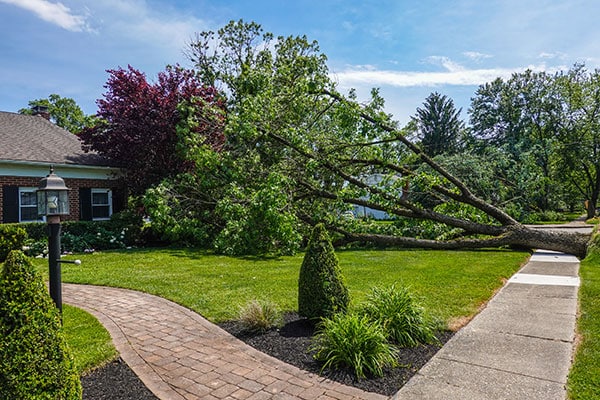Preparing trees for severe weather is an essential aspect of disaster mitigation and landscape management. Strong winds associated with these natural disasters can cause significant damage to trees, resulting in hazards to property and safety. Taking proactive measures to safeguard trees can help minimize their vulnerability to severe weather events. In this blog, we will discuss various strategies and best practices to prepare trees for severe weather.
- Tree Selection: The first step in preparing trees for severe weather is selecting the right tree species and placing them strategically. Choose native or adapted species that are well-suited to the local climate and soil conditions. Deep-rooted and wind-resistant trees like oaks, maples, and pines tend to fare better during storms. Avoid planting shallow-rooted and brittle trees that are prone to wind damage, such as Bradford pears or willows.
- Tree Placement: It is important to consider the location of trees around buildings and other structures. Do not plant trees too close to structures or powerlines, as falling branches or uprooted trees could cause significant damage. Proper spacing will reduce the risk of trees causing harm to property during severe weather events.
- Regular Tree Maintenance: Regular tree maintenance is crucial to ensuring trees are healthy and resilient to storms. Prune trees on a routine basis to remove dead or weak branches. Weak limbs are more susceptible to being torn off during high winds, and deadwood can become projectiles during severe weather. Proper pruning techniques, such as thinning and crown reduction, can also improve wind resistance.
- Structural Support: Some mature trees may require structural support to withstand high winds. Consult with a certified arborist to determine if any of your trees need support systems like cables and braces. These support systems can help reinforce tree branches and trunks, reducing the risk of breakage during severe storms.
- Soil Management: Healthy root systems are crucial for a tree’s stability and ability to withstand strong winds. Maintain good soil health by adding organic matter and mulch around the base of trees. This helps retain soil moisture and improves root growth. Adequate water drainage and avoiding soil compaction are also essential for healthy root development.
- Lightning Protection: Lightning strikes can cause severe damage to trees and lead to their decline or death. Consider installing lightning protection systems, such as lightning rods, on valuable or historically significant trees. These systems help redirect lightning strikes safely into the ground, minimizing damage to the tree.
- Windbreaks and Buffer Zones: Strategically planting windbreaks and buffer zones can protect trees from strong winds during severe storms. Windbreaks are dense rows of trees or shrubs planted on the windward side of a property to slow down and redirect wind. Buffer zones can be created by planting trees and shrubs around the perimeter of a property to provide additional protection from wind.
- Remove Potential Hazards: Regularly inspect trees for signs of disease, decay, or insect infestations. Weak or compromised trees are more likely to fail during severe weather. Identify and address these issues promptly, which may involve removal of hazardous trees or implementing appropriate treatments.
- Create Defensible Space: Defensible space is an area around structures where vegetation, including trees, is strategically managed to reduce the risk of fire and wind damage. Provide a well-maintained defensible space around buildings by keeping trees properly pruned and removing highly flammable vegetation.
- Establish a Disaster Plan: Prepare a disaster plan that includes specific procedures for dealing with trees before, during, and after a severe weather event. This plan should outline how to secure or evacuate the area, whom to contact for professional help, and what actions to take to protect trees and property.
- Community Engagement: Collaborate with your community or neighborhood association to raise awareness about tree preparation for severe weather. Promote tree care, provide educational materials, and organize workshops or training sessions to disseminate knowledge and encourage collective efforts in tree preparation.
Preparing trees for storms requires a proactive and comprehensive approach. By selecting suitable tree species, maintaining tree health, implementing structural support when necessary, and creating defensible space, you can significantly reduce the risk of tree damage during severe weather events. Engaging the community and seeking professional advice from certified arborists are valuable steps in developing an effective tree preparedness strategy. Call Integrity Tree Care for any storm damage cleanup services.



